Human Orbital Spaceflights
![]()
International Flight No. 46Soyuz 12UralUSSR |
|
![]()
Launch, orbit and landing data
walkout photo |
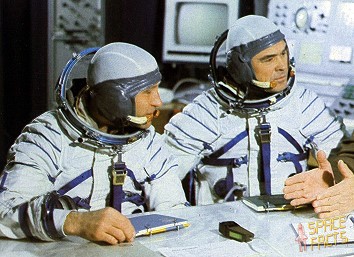 |
|||||||||||||||||||
alternative crew photo |
alternative crew photo |
|||||||||||||||||||
alternative crew photo |
alternative crew photo |
|||||||||||||||||||
alternative crew photo |
alternative crew photo |
|||||||||||||||||||
Crew
| No. | Surname | Given names | Position | Flight No. | Duration | Orbits | |
| 1 | Lazarev | Vasili Grigoriyevich | Commander | 1 | 1d 23h 15m 32s | 31 | |
| 2 | Makarov | Oleg Grigoriyevich | Flight Engineer | 1 | 1d 23h 15m 32s | 31 |
Crew seating arrangement
|
 |
|
||||||||||||
1st Backup Crew
|
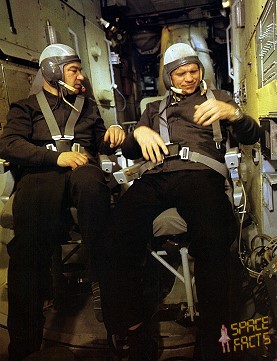 |
|||||||||||||||
2nd Backup Crew
|
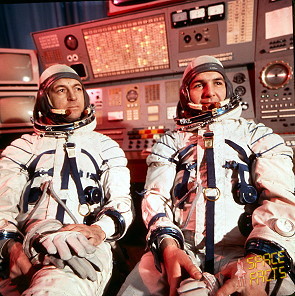 |
Hardware
| Launch vehicle: | Soyuz (No. S15000-26) |
| Spacecraft: | Soyuz 12 (7K-T No. 37) |
Flight
|
Launch from the Baikonur Cosmodrome; landing
400 km southwest of Karaganda. Vasili Lazarev became first Soviet Soyuz Commander, who was both a military pilot and a medical doctor. Soyuz 12 was a test flight of the new designed Soyuz capsule. The crew capacity of the capsule had been decreased from three to two cosmonauts to allow for space suits to be worn during launch, reentry, and potentially hazardous maneuvers. As the first manned test of the new version of the Soyuz ferry craft, Soyuz 12 was to have flown to a Salyut station. But the failures of Salyut 2 and Kosmos 557 in the months previous meant there was no station for the craft to dock to. The service module had no solar panels, carrying batteries for power instead, which limited the flight to about two days, enough time for a journey to and from a space station. A multispectral camera in the orbital module was used in coordination with aircraft to photograph Earth. The intention was to survey crop and forest conditions, it was reported. The cosmonauts also tested using a Molniya 1 satellite to communicate with ground stations when out of range. The Soyuz spacecraft is composed of three elements attached end-to-end - the Orbital Module, the Descent Module and the Instrumentation/Propulsion Module. The crew occupied the central element, the Descent Module. The other two modules are jettisoned prior to re-entry. They burn up in the atmosphere, so only the Descent Module returned to Earth. The deorbit burn lasted 188 seconds. Having shed two-thirds of its mass, the Soyuz reached Entry Interface - a point 400,000 feet (121.9 kilometers) above the Earth, where friction due to the thickening atmosphere began to heat its outer surfaces. With only 23 minutes left before it lands on the grassy plains of central Asia, attention in the module turned to slowing its rate of descent. Eight minutes later, the spacecraft was streaking through the sky at a rate of 755 feet (230 meters) per second. Before it touched down, its speed slowed to only 5 feet (1.5 meter) per second, and it lands at an even lower speed than that. Several onboard features ensure that the vehicle and crew land safely and in relative comfort. Four parachutes, deployed 15 minutes before landing, dramatically slowed the vehicle's rate of descent. Two pilot parachutes were the first to be released, and a drogue chute attached to the second one followed immediately after. The drogue, measuring 24 square meters (258 square feet) in area, slowed the rate of descent from 755 feet (230 meters) per second to 262 feet (80 meters) per second. The main parachute was the last to emerge. It is the largest chute, with a surface area of 10,764 square feet (1,000 square meters). Its harnesses shifted the vehicle's attitude to a 30-degree angle relative to the ground, dissipating heat, and then shifted it again to a straight vertical descent prior to landing. The main chute slowed the Soyuz to a descent rate of only 24 feet (7.3 meters) per second, which is still too fast for a comfortable landing. One second before touchdown, two sets of three small engines on the bottom of the vehicle fired, slowing the vehicle to soften the landing. A large object was jettisoned when the craft was preparing for retrofire. The object remained in orbit for 116 days, landing 400 km southwest of Karaganda. |
Photos
 |
 |
 |
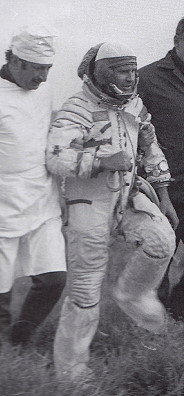 |
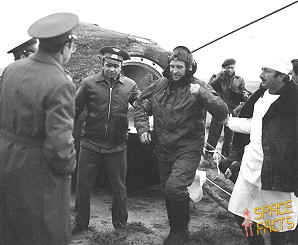 |
| © |  |
Last update on March 28, 2020.  |
 |